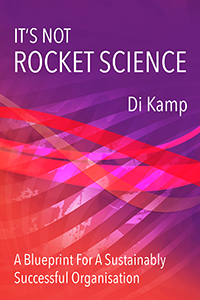We were all sold a bit of a false promise with the advent of technology in the workplace, that technology would be a miraculous cure-all for almost every organisational and team-working issue.
We were going to have a four-day working week (because computers would be doing most things), but that never quite materialised. Communication would improve with the instant communicative power of emails, but I think it’s safe to say that there are not many of us who would agree with that statement; in fact, most people we come across find emails the bane of their working lives!
Now we’re using technology more than ever for our communications, not only at home but also in the workplace. The pandemic led to a lightning-fast rollout of new technologies that, without the pandemic, would probably have taken three-to-five years to have been implemented in as many organisations as they have been. Zoom, MS Teams, and WhatsApp are now fundamental parts of any team’s communication.
Over the past 23 years Meta has been in business, we’ve gone from teams being in the same office (and mostly the same area of the office), to being spread over numerous offices nationally, and then to the bigger organisations over numerous offices globally.
When you’re not in the same office, this will inevitably affect a team’s effectiveness and its ability to communicate well. Combine that with a team which is in five different time zones, and it becomes an even greater challenge.
Communication means, etymologically, “that which we share together”– it comes from the same root of the words “common” and “commune”. Yet, nowadays, how often do we SHARE things through our communication and how often do we just say things or send things?
Communication in organisations has become very transactional – “I need this, so I will get it from you”. Which it is very easy to do (mostly via emails), but it misses a very important part of communication – the feeling! And here’s what’s important to know: without the feeling, communication is not very effective – because communication is a FEELING NOT A FACT.
We want to feel we’ve been heard; we want to feel that someone has understood us; we want to feel that someone is actually communicating with us and not just telling us something. We want to feel, in this hybrid era, that we’re part of the team, that others care about us, value us, and appreciate us.
That all comes through how we communicate with one another.
It’s great in some ways that, now, we get to work at home. Technology has advanced so that we can be at home and do most of our work pretty effectively. There are some bonuses to working from home (although it’s a whole other question as to whether we actually USE those bonuses much now) but there are also down-sides. One of the down-sides is how it affects the team dynamic.
It’s not as easy to collaborate with your team when you’re not in the same room. It’s not as easy to build relationships with others when you’re not in the same office. It’s not as easy to call for help or get the informal support that comes from having your team-mates next to you in an office. It can be quite isolating to work from home and, with the current pressures of work, that can lead to anxiety, increased stress, and a feeling of overwhelm in the individual team member. In the past, this might have been highlighted with the team or seen by the team before it got to that stage.
The other fundamental issue with hybrid working and not being in the same office is that it will inevitably affect team communication. When you’re in the same office (and yes, I know, not everyone wants to be there, but go with me), then you can just check in with other team-mates during the day. You can easily access advice, support, and other team-mates’ knowledge when you’re in the office. There are also the informal conversations which build rapport, relationships, team spirit – the energy that exists when a team sits together can be palpable and helps all the team members get through those tough and challenging days.
During the last three years, we’ve worked with numerous leadership teams and teams within organisations. One of the consistent themes that has come through from those team development journeys has been that communication has gotten worse, not better, during the hybrid era and people feel less part of the team and more isolated now they are working from home.
In the past there were only really three main channels for communication. Face-to-face, via the phone, email/text. Now, as technology has grown, there are more. Communication has always been an issue in organisations (just refer to any staff survey you’ve had over the last 20 years, and you’ll see that, more often than not, communication is highlighted). But now, in the hybrid era, we need to consciously re-look at communication methods so that we can improve our team dynamics and team effectiveness, and make sure that everyone feels a valued part of our team. It’s time for a re-evaluation of our team communication strategy.
Pre-pandemic we didn’t have to consciously think about team communication as much, but what I’m suggesting is that now, we really do.
So, what can we do to improve communication in the hybrid-era? Well, the first thing is to make sure you have a clear communications strategy in your team (and by the way, if you are a director or CEO this should be done as an exercise across your directorate/organisation – so there is a common communications strategy!).
What do I mean by a comms strategy in this case?
Well, nowadays, there are more channels for communication. Not just face-to-face, phone, and email/text – there is video conferencing with Teams video or Zoom, there is Teams chat, there are various WhatsApp groups, and then various specialist chat or messaging platforms that your sector might use.
The first thing is to agree as a team is: WHAT COMMS CHANNEL you use for what, and in what hierarchical order? For example, you might agree that face-to-face is still the most preferable but, if you can’t do face-to-face then what channel do you use? Put them in hierarchical order – I can bet you that, when you have this conversation, almost everyone will put emails last and, as a result, at least within your team, it should mean there are fewer emails.
You might make an agreement that, if it’s an emergency or an issue of importance, you call one another on the phone. If that is known and agreed in the whole team/directorate/org, then when you see a team colleague or leader calling you, you know to answer because it is important or, if you have a missed call, you immediately call them back.
You might agree that, if you need to ask a quick question from someone, the easiest way is to send an MS Teams chat message. Or you might agree that the team WhatsApp group is really only for social and informal things, not for anything important that requires action.
What you agree and what hierarchy you come up with are up to you as a team. What’s important is that you’ve all taken part in it, and you’re all in agreement.
The second thing is re-capturing that team spirit and making sure the team feels like a team. How do you ensure that you are regularly checking in with each other? Do you make sure that you have regular in-person team meetings, for example? Do you do things as a team to keep the team spirit alive and well? What about a team quiz, what about ‘worst joke of the week’ on your WhatsApp team chat?
When was the last time you all went out for a social event or a team lunch? There are many ways to re-capture and foster the team culture and re-invigorate the team spirit.
I’ve seen things like lunch clubs, and food shares – where team members bring in a lunch to share or have a theme for their lunches like ‘home-made soup’ or ‘food from my country or region’. These things don’t have to be done together in person, they can just as easily be done over Teams whilst at home. Also, many people no longer take their lunch breaks, so it’s a great way to improve the team culture and also to ensure everyone has a lunch break and fills their fuel tank.
Does your team check in with one another every week, every day? Do you have a buddy system where members of the team make sure they are looking out for their colleague’s well-being? Do you have a rant buddy in your team? Or an expert who you can ask for advice and guidance on particular job-related topics?
I’m talking primarily now to the team leaders. When was the last time you had a team away-day? I bet it was most likely quite a while ago, was it more than a year ago? Was it pre-pandemic? If so, it’s time you had an away-day with your team!
Getting out of the office (and out of your home office) and getting together as a team to do some learning TOGETHER is so powerful and so important. Especially now, considering you are not together in an office as often. It helps to build team spirit, helps to identify and deal with the issues and problems you’re facing as a team, and gives the team an opportunity to really get to know one another, not just within work roles and as fellow team-mates, but also as human beings. You might use your team away-day to consciously look at upskilling your team on a particular topic or, feeling inspired by this article, look at developing your own team comms strategy and making sure that everyone in your team feels valued, supported, and appreciated!
At Meta we love helping people navigate the new challenges that hybrid working gives to a team and to an organisation. So, if you’d like a fun, enjoyable, but practically useful away-day with your team this year, if you’d like some tips on how to make your team away-day a rip-roaring success, then please don’t hesitate to get in touch. We have a wealth of topics that can be used as a basis for a team away-day with purpose, which will improve your team’s effectiveness and boost your team’s spirit.
I hope this article has made you think, and I hope it makes you revisit your own team communications strategy and reminds you of just how important your team spirit is in this hybrid-era of work.
The world of work is changing, so let’s make those changes work for us! That’s what we’re in business at Meta to do. So, if you’d like some advice or help or support, on how to make work really WORK for you, you know where we are.
Have a wonderful month!
In peace and with love
Jo xx





Comments are closed.